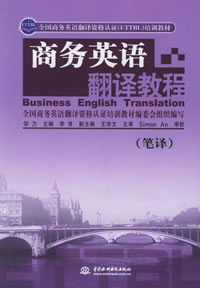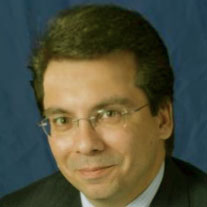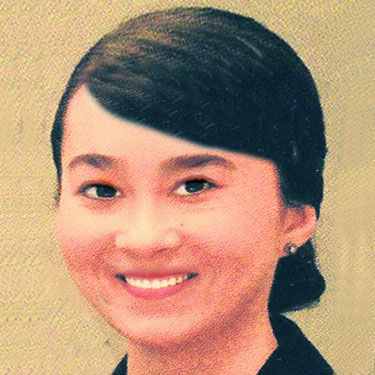书面翻译与口译培训核心步骤
作者:古龙 2009-07-04




语际翻译公司 转载请注明https://www.scientrans.com
∗本栏目部分文章内容来自互联网,部分已经过本站编辑和整理,如有版权事宜请联系Email/MSN jesczhao@hotmail.com
During the period of time mentioned above, this program also benefited from the fact that the professor in charge of the T-I program had ample experience as a conference interpreter, as a translator and is also a Certified Federal Court Interpreter and has a background that includes degrees in two non-US universities, both of which had excellent T-I programs2. The combination of teaching methods, foreign language specialization, and theoretical and practical knowledge of both translation and interpretation enabled the UNE program to offer a mosaic of training exercises aimed at meeting the actual needs of our present-day society and its markets. Until the time the professor in charge of T-I at UNE left, classes in both T-I courses and in many other related Spanish courses (Intermediate and Advanced Spanish, Advanced Grammar and Composition, etc.) saw their ranks swell significantly. From a handful of aspiring translators and interpreters in courses before 2001, classes more than doubled and even tripled in number.
The T-I program, likewise, constituted an appeal for quite a few "bilinguals" and the very few "ambilinguals" (Catford, 1965)3 that lived, studied and worked in Nebraska and other states. This very fact posed new challenges and set new demands for said program. In it, an important component emerged: an exercise manual comprising various types of linguistic, cultural and T-I activities, many of them appearing for the first time in materials related to T-I training. This manual harmonically combined the need for translating-interpreting real-life short and medium-size texts with the use of contemporary, up-to-date longer texts in practically all fields of human endeavor, even with the inclusion of short literary excerpts during the advanced stage of Translation II.
An Exercise Manual with a New Outlook on Exercises: Expansion and Semantic Groups; Code Switching; Spanglish; Cultural and General; Vulgarities; Business and Ads; Lexical and Grammatical Comparisons; Generic Texts.
Part of the professor's above-mentioned background and expertise found its way into a special manual for the training of translators and interpreters, first published in 2003, then twice in 2004 and again in 2005. This manual is already in use in several colleges and universities, and private companies and training specialists in the U.S. and abroad have shown their interest in it (González, 2003, 2004, 2005).
Among its many types of exercises, the Manual offers, perhaps for the first time together in a textbook, some of the following:
• Expansion and Semantic Groups: A type of exercise in which the trainee needs to first define, then amplify an idea expressed in a given language in that same language; offer possible contextual synonyms, relate the idea/term/expression to others in similar contexts, then proceed to translate the original idea into another language. This type of exercise also refers to hyponyms and hyperonyms or hipónimos and hiperónimos (Baker, 2001 and López & Minett, 2001). The objective of this type of exercise is to broaden the translator-interpreter's perspectives, expand his active and passive vocabulary and contribute to a solid mastery of both languages in contact.
Examples:
Boxeo -> pugilismo -> narices chatas, árbitro, cuadrilátero, la campana, KO, TKO -> Boxing, ring, referee, bell, knockout, technical KO, etc.
El árbol -> la ceiba, la palma, el pino, el abedul, el s
- 评论
- seme:文章内容文章内容文章内容文章内容文章内容文章内容文章内容文章内容文章内容 章内容文章内容文章内容文章内容文章内容
- seme:文章内容文章内容文章内容文章内容文章内容文章内容文章内容文章内容文章内容 章内容文章内容文章内容文章内容文章内容

- 日常生活中常用的英语五星级句子
2009-7-11 23:00:38 - 熟练地运用英语的一个重要方面就是学习并掌握英语本族者常用的生动、的活泼的习语。 1. After you.你先请。这是一句很常用的客套话,在进/出门,上车得场合你都可以表现一下。好象现在女士不愿意你这么做,特别是那些女权主义者,我还记得这么一段话:一个女士对...
- 英语中各种数字的读法
2009-7-11 22:59:44 - (1)年号的读法: 1979←→nineteen seventy-nine or nineteen hundred(and) seventy-nine; (2)电话号码、货币的读法: 1023←→one o two three;1227←→one dou...
- 第四届IEEE生物信息与生…
2009-6-30 19:42:01 - 基本信息 主办单位: 四川大学,IEEE生物医学工程协会(EMBS) 承办单位 开始日期 2010/06/18 结束日期 截稿日期 2009/1...
- 第九届全国光电技术学术…
2009-6-30 19:35:58 - 基本信息主办单位: 中国宇航学会光电技术专业委员会承办单位 开始日期 2009/11/01结束日期 截稿日期 2009...
















